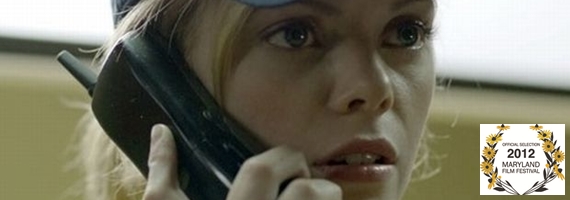
There was a healthy amount of buzz coming into this film. Its controversial debut at Sundance had made waves all the way to the east coast and people were talking about it during the festival. A point that was almost automatically brought up by any one was that the film was based on true stories that had happened. After the film played at Sundance, its Q&A was so powerful, NPR broadcast it over the air in Park City and it became the first broadcast of it’s kind. It was also noted to us that last year, when Director Craig Zobel was at the festival, he got the directors together and showed them a work in progress cut that got a lot of people talking. So it was no surprise that the theater filled up quickly. Before the film hit the screen, Zobel made it a point to say that not only was the Maryland Film Festival one of his favorites, but it was a favorite because of how all of his experiences at the festival were positive. He also talked a bit about the film, saying he read a few psychological studies that dealt with the films subject matter and he found it hard to walk away from what he felt and the only way to exercise those feelings was to make this film. The film is supposed to be startling and supposed to spark conversation. They dimmed the lights, the projector clicked and whirred and….
This film is gorgeous. The first shots you see are the subtle beauty that is Middle of Nowhere USA (later revealed to be Ohio) as a fast food chain opens for business. But from the get-go, the film is uncomfortable. A very annoyed truck driver lays into the fast food manager for not properly storing coleslaw and is just really negative about the whole situation. Clearly anyone who starts their day like that has to know in the back of their mind that it is not going to get any better. The film powers on, showing daily routines and customer interactions while giving a little background about the characters. Not a lot, but just enough to get an idea of who they are. Things seem to be going better for the manager, played pitch perfectly by Ann Dowd, until she gets a call from the cops saying one of her employees, Becky (Dreama Walker) stole fifty dollars from a customer. The cop asks the Manager to take Becky in back and detain her until the cops arrive. Then he asks her to question her. Then search her belongings. Then search her. The tension in the film grows so much that its almost makes you sick watching the movie. This is a very difficult film that not everyone will enjoy or even understand. It’s mentally disturbing plot thickens with each press and step as the employees comply with the cops requests. Your stomach knots up the entire film and doesn’t untangle until a few days later. Even now, I can’t shake this film. But as difficult and uncomfortable as it is to watch, the acting could not be better. There is not a single weak link and that’s what makes it all the more difficult. The soundtrack is sparse which makes some scenes all the more unbearable as you have to listen to what’s happening without any orchestral or vocal reprieve. It’s a powerful that film lovers and cinephiles should search out and watch but a film that a common moviegoer will most likely not enjoy.
Before the Q&A even started, even before the film reached it’s climax, several people walked out. I could hear many muttering “This is gratuitous” or “I can’t handle this” as they walked out visually disturbed from this film. As the director took the mic, he explained that he feels no disrespect as many have walked out of this film during its screenings. He went on to discuss how he had heard stories of such things happening at Applebees and Ruby Tuesdays. He did research and found that many crimes started there but then progressed to Wendy’s and other fast food businesses. Some of his research also led him to the Stanley Milgram Experiments. When asked there where the dialog came from, he said he was able to pull from experience. Not THAT particular experience, but he worked in previous business and jobs where he had to sell a product he was really unsure of so he was able to use that persuasive inflection in the dialog of the film’s characters. An easier source was court documents from these cases. A few audience members felt the scenes ran on long but the director assured them that every scene in the film was chosen to add or release the tension, no matter how long they ran on. There was more discussion based around the climax of the film but I don’t want to give that away so I will leave that out. I’m sure it will end up ton IMDB at some point.






